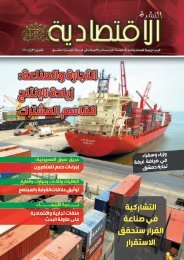SIGAR
2017-01-30qr
2017-01-30qr
Create successful ePaper yourself
Turn your PDF publications into a flip-book with our unique Google optimized e-Paper software.
ECONOMIC AND SOCIAL DEVELOPMENT<br />
Karzai administration added two million students, including those whose<br />
schools had been closed. 748 On January 1, 2017, acting Minister of Education<br />
Assadullah Mohaqiq (Minister Balkhi lost a vote of confidence in the lower<br />
house of parliament on November 13), told the upper house of parliament<br />
that more than 1,000 schools across the country were closed because of<br />
security issues. 749<br />
Education Management Information<br />
System: a centralized, computerized<br />
network system used to gather school data<br />
to support decision making in the Ministry<br />
of Education.<br />
Source: USAID, Data Quality Assessment of the Ministry of<br />
Education’s Education Management Information System,<br />
7/2016, p. 1.<br />
Education Management Information System Data<br />
The Ministry of Education (MOE) had previously acknowledged a large<br />
number of children are out of school, but was unaware of how many, who<br />
or where they are, or their backgrounds. 750<br />
To better help the MOE gather school data to guide their decision<br />
making—and indirectly understand how donor funding is benefitting<br />
Afghanistan’s education system—donors funded the Education<br />
Management Information System (EMIS), which tracks critical educational<br />
statistics such as the numbers of teachers working and students enrolled.<br />
Barriers to data collection have resulted in imprecise and inaccurate EMIS<br />
data, prompting further concern from donors. To understand the scope of<br />
the problem, USAID funded an assessment of the data-quality in EMIS to<br />
identify and address gaps in the system. 751<br />
Despite its shortcomings and inability to answer key questions, the initial<br />
assessment found that EMIS has developed the capacity to manage a<br />
nationwide information system. However, there remains a gap between its<br />
actual capacity and what is needed to ensure the information is accurate<br />
and reliable. Key weaknesses were identified, including lack of oversight,<br />
inconsistent monitoring at schools, insufficient capacity and training on<br />
EMIS forms and procedures, inadequate financing and overreliance on<br />
donor-funded assistance, and lack of coordination resulting in duplicative<br />
data collection and inefficiencies. 752 USAID reported that the second round<br />
of assessment results is expected to be released next quarter. 753<br />
USAID Programs<br />
USAID aims to improve equitable access to quality education in Afghanistan<br />
through community-based classes in remote regions. USAID also seeks to<br />
develop relevant, in-demand technical skills to better prepare Afghans for<br />
employment. Its programs focus on early-grade reading, textbooks and<br />
other learning materials, and raising literacy rates through teacher and<br />
educator training. 754 USAID had disbursed approximately $883 million for<br />
education programs in Afghanistan, as of December 31, 2016. 755 USAID’s<br />
active education programs have a total estimated cost of $403.1 million and<br />
can be found in Table 3.25.<br />
USAID also funds other donor-administered education programs. On<br />
October 24, 2016, USAID approved the disbursement of $5 million to<br />
the Afghanistan Reconstruction Trust Fund for the World Bank’s Higher<br />
178<br />
SPECIAL INSPECTOR GENERAL I AFGHANISTAN RECONSTRUCTION







